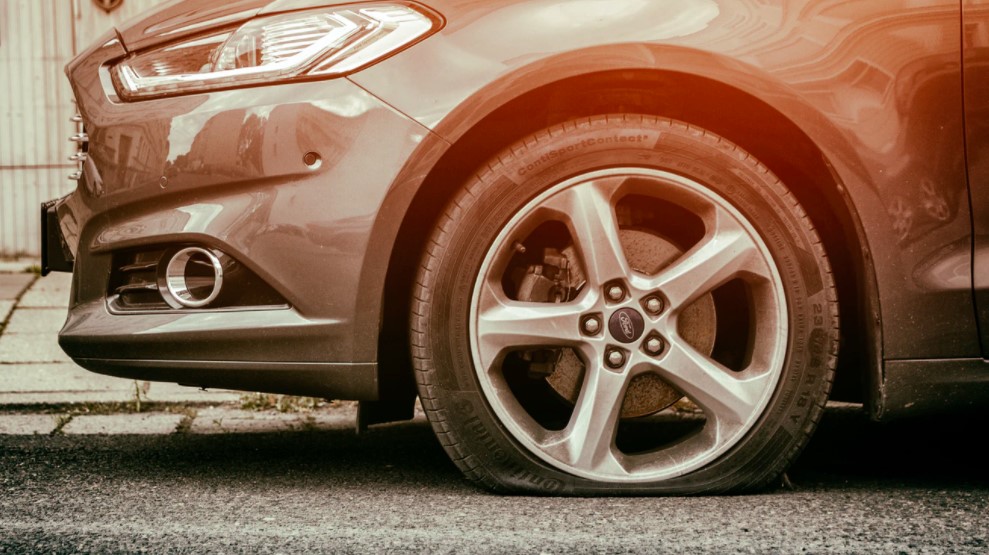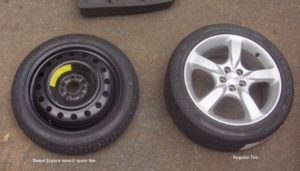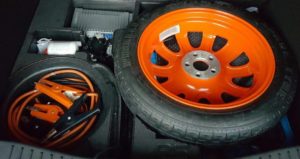A flat tire is a major inconvenience that is likely to spiral out of control. Especially if you need to drive to work and you do not have a spare tire. Or are in the middle of a busy road during rush hour. While flat tires may not be a significant issue, they are still a nuisance that you would rather avoid. And with extra precaution, you can avoid flat tires.
Do Tires Go Flat for No Reason?
No. While it may seem that way, mostly if the tire went flat overnight, tires do not go flat for no reason. Most often than not, the underlying cause is something you would never have thought could cause a flat tire.
Common Causes of Flat Tires
These are the most prevalent flat tire causes.
-
Puncture by Sharp Objects
Sharp objects on the road can rip your tire, causing it to lose air. What can puncture a tire? This can be anything from a piece of glass, branches, nails, screws, sharp stones, and so forth. Anything strong enough to pierce through rubber can puncture the tire.
-
Failure or Damage to the Valve Stem
A damaged valve system will lead to air leaks that may cause your tire to go flat. The valve can cause air leaks if it is loose around the stem that connects it to the tire or if the metal gets corroded and stope being airtight.
Check this too: Will a Donut Tire Fit Any Car?
-
Rubbed or Ripped Tire
A worn-out tire will ultimately start leaking air when it gets to the point where it is thin and flimsy. This can be blamed on the quality of the tire or the condition of the tire. The air leak can also be due to worn-out tread that results in air leaks along the tire’s tread line.
-
Tire Bead Leaks
This is leakage along the tire edge that rests on the tire rim. Sometimes, air will leak from the tire bead, which is the tire’s edge that rests on the rim. This can occur due to a tire slip or cracking of the tire around the rim.
-
Vandalism
A flat tire can be aa result of a cruel joke when someone decides to let the air out of your tires; fortunately, this cause can be remedied with ease. It is also the least expensive to fix as you do not have to worry about replacing the tire.
-
Too Much Pressure
Over-inflated tires can lead to a burst tire, especially if the over-pumping is a regular occurrence. Tires have a maximum pressure, and exceeding it will cause the rubber to expand and become weaker the same way a balloon bursts when overinflated.
Check this too: How Often Should You Check Your Car Tire Pressure?
-
Overloading
Exceeding the maximum amount of weight your vehicle can hold will exert excess pressure on the tire, causing them to become flat over time.
How to Avoid Flat Tires
Here are some tips to help you reduce your chances of getting a flat tire.
-
Keep Tires Inflated
Inspect your car tires regularly and ensure they are inflated optimally according to the manufacturer’s recommendations. Try to find a balance between the highest recommended pressure and the lowest recommended pressure. High tire pressure leads to poor road performance, while low tire pressure wears out the tires.
-
Check Your Spare Tire
Imagine going to replace your flat tire only for your spare tire to flake on you as well. Avoid this problem by ensuring your spare tire is inflated and does not have any air leaks. Inspect it for cracks to ensure it does not go flat while you are driving.
-
Replace Old Tires
Make tire inspection a habit to ensure you keep tabs of your tires’ wear and tear. This will save you the headache of handling a flat tire on the road. Which is avoidable if you change the tires as soon as you notice they are worn out.
-
Buy Good Quality Tires
Higher quality tires will have thicker tread, better quality rubber, and better warranties. This will go a long way in ensuring they have a longer lifespan. It also means the manufacturer can cover any damages. Additionally, they will be more resistant to puncturing.
Check this too: Best tires for Subaru Crosstrek
-
Drive Carefully
Be on the lookout for debris or any sharp objects that can pierce your tires. Drive around any object that can damage your tires. Be cautious when driving near construction sites as some of the destructive objects may be covered in dust, making it impossible to spot them.
-
Plan for the Worst
Always have a can of compressed air your car so you can reflate the tire when needed. You can also invest in a tire pump, but this will require a lot more effort to inflate the tire. You should also have a jack, wrench, and any other tool you may need to change your tire if it goes flat.
-
Avoid Overloading
Do not exceed the maximum amount of weight your vehicle can hold. And if you have to carry a heavy load, boost your tire pressure to enable the car to handle the excess weight. However, you should not exceed the maximum recommended pressure limit.
Can I make it Home on a Flat Tire?
It depends on how far you are from home when you get a flat tire. And whether you are willing to incur the extra costs of repairing the damage caused by driving on a flat tire. Your car rim will begin to get damaged after 1.497 miles.
On the other hand, if your tire is not entirely flat, you can be able to make it home if you drive at a snail pace. The speed should not exceed 20 miles per hour if you want to conserve the little pressure left in the tire.
To avoid accidents and to remain in control of your car, try to stay below 50 miles per hour if you are on a highway and have to drive at the regulated speed. In this case, you may only be able to get to the next stop or exit before you have to change the tire.
Can You Let a Car Sit on a Flat Tire?
Yes. But it is optimal to get is changed as soon as possible. The longer you let your car sit with a flat tire, the higher the chances of damaging the tire permanently. The pressure exerted on the flat tire may cause it to rip or develop invisible cracks that may be problematic when you resume driving the car.
Check this too: How Long Does it Take to Change a Tire



